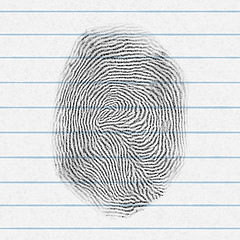Fingerprints & Forensic Evidence On Guns And Firearms
Most people associate fingerprints with criminal investigations.
 Popular TV shows like NCIS, CSI, and Bones are based on forensic investigation catching criminals who believed they committed the perfect crime. Many of these television dramas focus on DNA evidence such as fingerprints identification or dactyloscopy.
Popular TV shows like NCIS, CSI, and Bones are based on forensic investigation catching criminals who believed they committed the perfect crime. Many of these television dramas focus on DNA evidence such as fingerprints identification or dactyloscopy.
Dactyloscopy compares two instances (impressions) of fingerprints to determine whether those two impressions came from the same individual. Fingerprints are ridge skin impressions from a person’s hands or feet. Every person’s skin impressions are different so everyone has a unique set of fingerprints. In theory, fingerprints or the lack of fingerprints should be a critical piece of evidence in any criminal investigation. If a person’s fingerprints are at the crime scene, most people think that should mean a person committed the felony or the misdemeanor crime. So no fingerprints would mean that a person didn’t commit the crime and either shouldn’t be charged or acquitted …right? This, however, is simply not true. I am sorry to disappoint the fans of NCIS, CSI, or the latest criminal investigation drama.
A lack of fingerprints will not always end a criminal investigation or lead to the dismissal of criminal charges. It’s often difficult to obtain fingerprints from some surfaces, especially firearms. The ability to lift fingerprints from a surface (latent fingerprints) is really based on the type of surface. It’s much easier to lift latent fingerprints from smooth surfaces such as glass, tile, porcelain, lacquered furniture and some smooth clean metals. The process, however, gets more difficult, when we move to painted surfaces, leather, paper and cardboard. Getting fingerprints is even harder for organic surfaces such as fabrics, trees and non-organic textured surfaces such as checkered handgun grips. Many investigations for gun crimes focus on lifting prints from these firearms. Gun crimes are sometimes called VUFA offenses which stands for a Violation of the Uniform Firearms Act in Pennsylvania. The most common violations are under Section 6105, 6106, 6108 and 6110.2.
Lifting latent fingerprints from guns and other firearms is often, however, very difficult. It’s hard because these firearms, especially, ones used in crimes, are often oily, extremely dirty surfaces with multiple overlapping impressions smeared by movement. The fact that the prosecution can’t present fingerprint evidence doesn’t mean their case isn’t strong. The prosecution can meet its burden of proof of guilt beyond a reasonable doubt with direct and circumstantial evidence. Prosecutors and district attorneys, in these situations, will also normally present an expert who can explain the lack of fingerprint evidence. Obviously fingerprints can help a criminal prosecution but their existence doesn’t mean the case is a loser for the defense.
Just like the prosecution’s expert can explain away the lack of fingerprints, a good defense expert can explain away their existence. Either way, fingerprints are never “dispositive” in a criminal or even a civil case. In other words fingerprints, won’t instantly win or lose the case for either side. Remember TV shows and movies are great but if you are charged with a crime don’t think fingerprints will sink you or set you free. For more questions about criminal defense, read one of my books, watch my videos or read my monthly newsletter. All available on the website.
Contact Our Criminal Defense Lawyers in PA & NJ
Please click here to contact our Philadelphia criminal defense lawyers. We offer free case reviews and serve the following areas in Pennsylvania and New Jersey, Atlantic City, Camden, Cherry Hill, Chester, Conshohocken, Doylestown, Media, Norristown, Philadelphi



